
Unleashing the Power of IoT in AI: A Technological Revolution
October 3, 2023
AI Marketing vs. Traditional Marketing: Which Is Right for You?
October 4, 2023Welcome to the future of marketing! In this digital age, businesses are constantly seeking innovative ways to engage with their customers. One such innovation that has taken the marketing world by storm is chatbots. These intelligent virtual assistants have proven to be more than just a trend; they are catalysts for transforming customer engagement in the realm of AI marketing.
Understanding the Role of Chatbots in AI Marketing
To embark on our journey into the world of chatbots, it’s essential to understand their pivotal role in AI marketing. Chatbots are AI-driven programs designed to simulate human conversation. They have evolved from simple rule-based systems to sophisticated natural language processing (NLP) engines. Today, chatbots are deployed across various industries to enhance customer interactions, streamline processes, and gather valuable data.
The Evolution of Customer Engagement
Customer engagement has come a long way. Traditionally, it relied on face-to-face interactions, phone calls, and emails. However, as consumers’ preferences shifted towards digital channels, businesses had to adapt. This shift gave rise to new challenges and opportunities in marketing. Chatbots emerged as a powerful solution, offering personalized, 24/7 support, cost-efficiency, and data-driven insights.
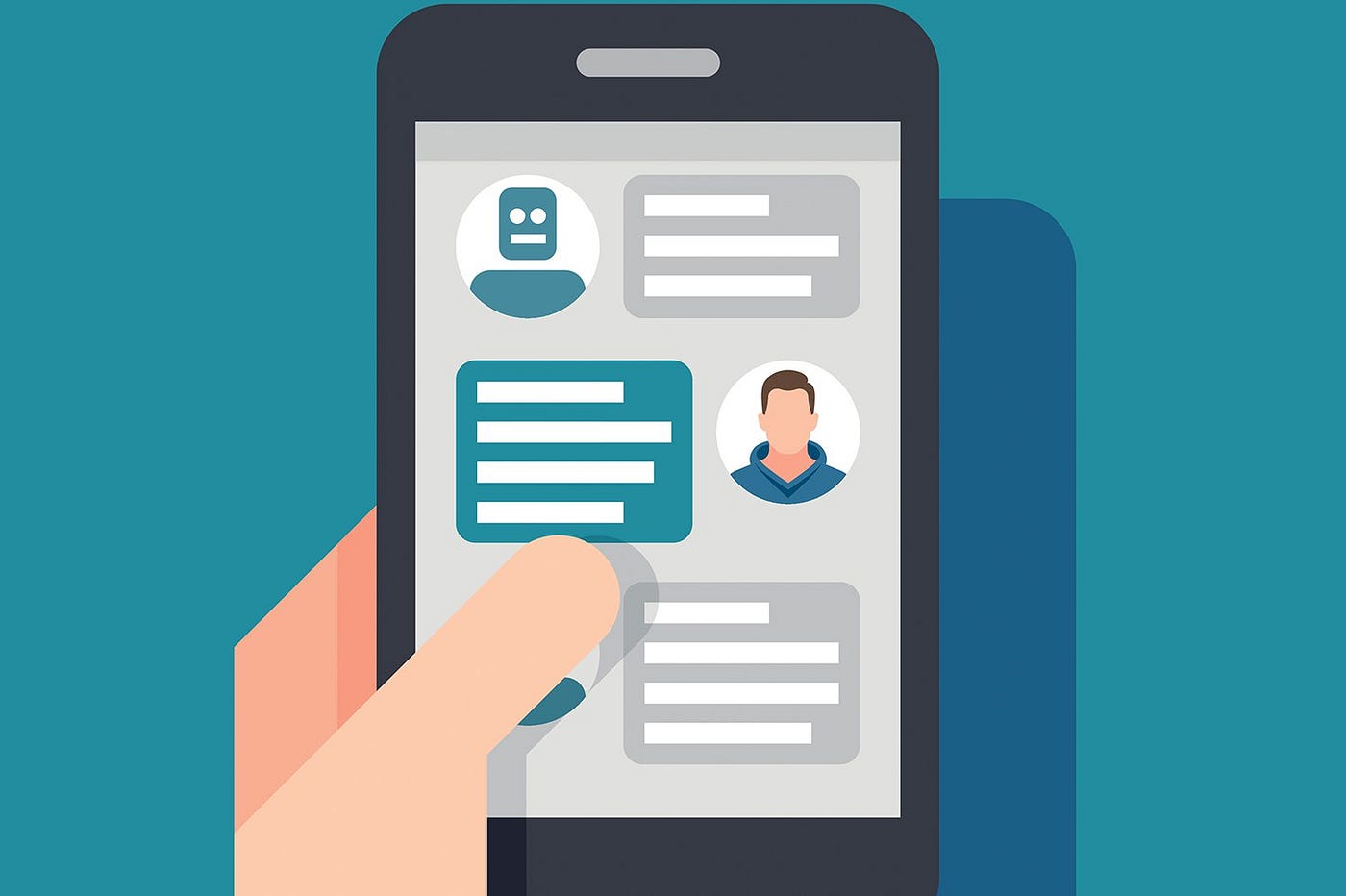
Chatbots 101
What are Chatbots?
Let’s start with the basics. Chatbots are software programs designed to interact with users through natural language, either in text or voice. They can be simple or highly complex, depending on their purpose and capabilities. The primary goal of chatbots is to provide efficient and effective responses to user queries or requests.
- The History of Chatbots: Chatbots have a rich history dating back to the mid-20th century. The first chatbot, Eliza, was created in the 1960s and could engage in text-based conversations. Since then, chatbots have evolved significantly, with milestones like IBM’s Deep Blue and Apple’s Siri paving the way for modern AI-powered chatbots.
- Chatbots vs. Humans: Pros and Cons: While chatbots offer numerous advantages, they also have limitations. It’s crucial to understand when to use them and when to rely on human agents. Chatbots excel in handling routine tasks, providing instant responses, and scalability. However, they may struggle with handling complex, nuanced conversations that require empathy and human touch.
Types of Chatbots
Not all chatbots are created equal. There are three primary types of chatbots:
- Rule-Based Chatbots: Rule-based chatbots operate on predefined rules and decision trees. They follow a set of instructions to respond to user queries. These chatbots are suitable for simple tasks like answering frequently asked questions or guiding users through a specific process.
- Understanding AI-Powered Chatbots: AI-powered chatbots leverage machine learning and NLP to understand and generate human-like responses. They can learn from interactions, adapt to user behavior, and provide more contextually relevant answers. These chatbots excel in natural language understanding and can handle a broader range of queries.
- Hybrid Chatbots: Combining the Best of Both Worlds: Hybrid chatbots combine rule-based and AI-powered approaches. They use predefined rules for some interactions and AI for more complex queries. This flexibility allows them to strike a balance between efficiency and adaptability.
How Do Chatbots Work?
To understand chatbots better, it’s essential to peek under the hood and explore how they function.
- The Anatomy of a Chatbot: At their core, chatbots consist of three key components: the user interface, the chatbot engine, and the backend systems. The user interface is where users interact with the chatbot, whether through a messaging app, website widget, or voice command. The chatbot engine processes user inputs and generates responses. Behind the scenes, backend systems manage data storage, processing, and integration with other software.
- NLP and Its Significance: Natural Language Processing (NLP) is the driving force behind chatbots’ ability to understand and generate human-like text. NLP algorithms analyze the structure and meaning of text, enabling chatbots to interpret user queries, extract information, and respond contextually.
- Backend Processes: Servers, Databases, and Algorithms: The backend infrastructure of a chatbot plays a crucial role in its performance. Servers host the chatbot, databases store user data and conversation history, and algorithms process and analyze data to improve chatbot responses over time.
Real-Life Examples
Let’s explore how chatbots are making a real impact in various industries.
- Chatbots in E-commerce: E-commerce businesses are using chatbots to enhance the shopping experience. Chatbots assist customers in finding products, provide personalized recommendations, and even facilitate checkout processes. For example, a chatbot can ask questions about a user’s preferences and guide them to the perfect product.
- Chatbots in Customer Support: Customer support is one of the most common use cases for chatbots. They can handle routine inquiries, such as order status checks or password resets, freeing up human agents to focus on more complex issues. For instance, an airline’s chatbot can help travelers check their flight status and book tickets.
- Chatbots in Healthcare: In the healthcare sector, chatbots are playing a vital role in patient engagement and support. They can schedule appointments, answer medical queries, and provide medication reminders. A healthcare chatbot might ask patients about their symptoms and offer initial recommendations.
Case Studies of Successful Chatbot Implementations
To illustrate the effectiveness of chatbots, let’s dive into a few case studies:
Case Study 1: Domino’s Pizza
Domino’s Pizza implemented a chatbot that allows customers to order pizza through messaging apps like Facebook Messenger. The chatbot provides a user-friendly interface for selecting toppings, sauces, and delivery options, making the ordering process seamless.
Case Study 2: Sephora
Sephora’s chatbot assists customers with product recommendations and beauty tips. By analyzing customer preferences and skin types, the chatbot suggests personalized skincare and makeup products. This approach has led to increased sales and improved customer satisfaction.
Case Study 3: HealthTap
HealthTap’s chatbot offers medical advice and symptom analysis. Users can describe their symptoms, and the chatbot provides information on potential causes and next steps. This has proven valuable for users seeking initial guidance before consulting a healthcare professional.
In the next chapter, we’ll delve deeper into the benefits of integrating chatbots into your marketing strategy, including personalization at scale, 24/7 availability, cost efficiency, and data-driven insights.
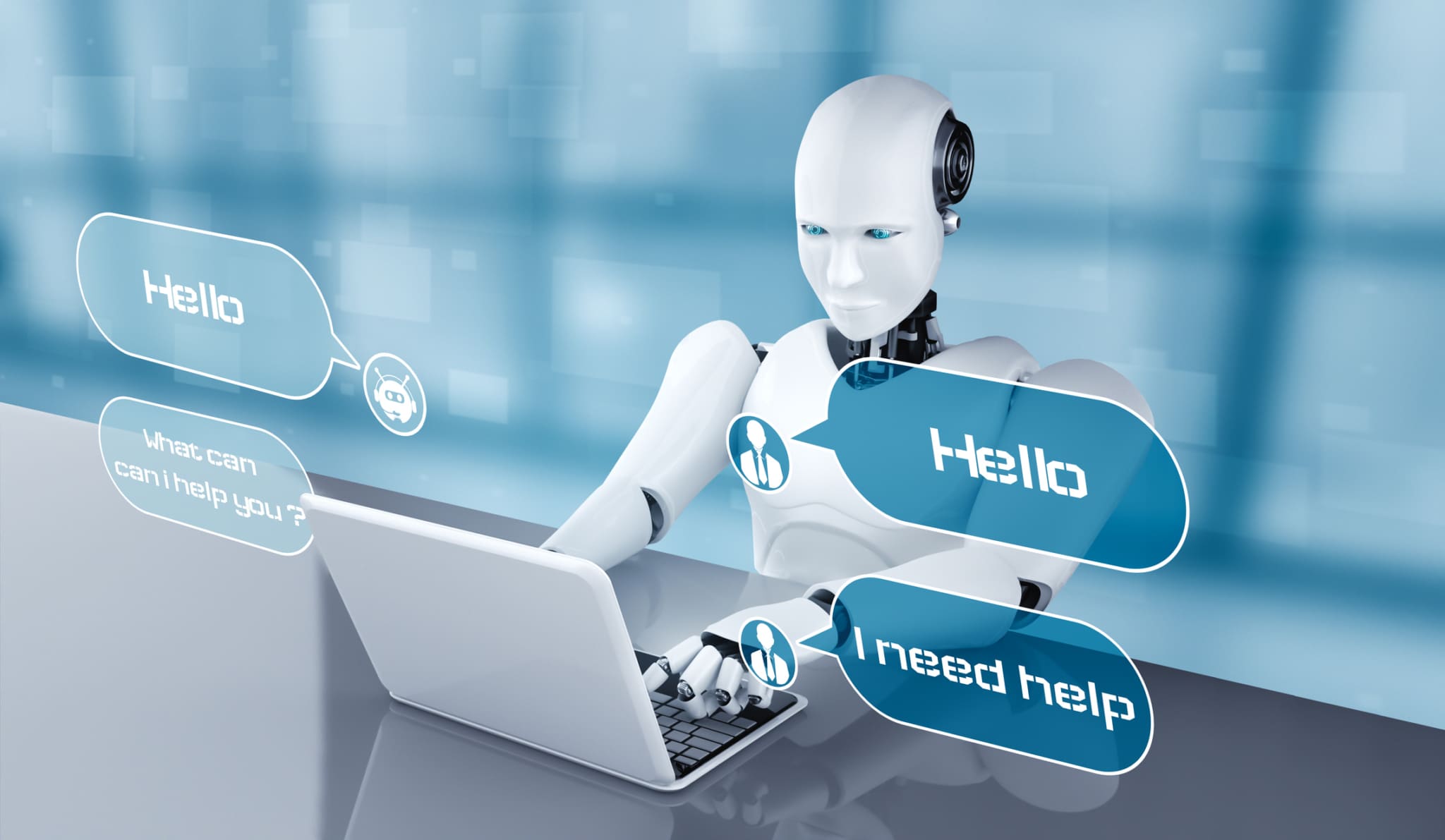
The Benefits of Chatbots in Marketing
In the fast-paced world of digital marketing, staying ahead of the competition is essential. Chatbots have emerged as valuable assets, offering a myriad of benefits to marketers aiming to enhance customer engagement. In this chapter, we’ll explore these advantages in detail.
Personalization at Scale
Personalization is the key to winning over modern consumers. Chatbots enable businesses to deliver personalized experiences at scale, catering to the unique preferences and needs of each customer.
- Tailoring Messages to Individual Preferences: One of the standout features of chatbots is their ability to analyze user data and offer tailored recommendations. For example, an e-commerce chatbot can suggest products based on a customer’s browsing history and previous purchases. This level of personalization increases the likelihood of conversion and customer loyalty.
- Using Customer Data to Enhance Interactions: Chatbots collect valuable user data during interactions. This data can include browsing behavior, location, and past interactions. Marketers can use this data to refine their marketing strategies, segment their audience effectively, and deliver more targeted campaigns.
- Creating a Sense of Belonging: Customers appreciate brands that make them feel valued and understood. Chatbots can engage users in meaningful conversations, asking about their preferences and experiences. This not only strengthens the customer-brand relationship but also fosters a sense of belonging.
24/7 Availability
In today’s globalized world, customers expect round-the-clock service. Chatbots can meet this demand by providing 24/7 availability, ensuring that no customer inquiry goes unanswered.
- Never Miss a Customer Inquiry Again: Unlike human agents who have working hours and limitations, chatbots are always ready to assist customers. Whether it’s a late-night product query or a weekend support request, chatbots can provide instant responses.
- The Importance of Being “Always On”: Being “always on” is more than just a convenience; it’s a competitive advantage. Customers appreciate businesses that are responsive and available whenever they need assistance. Chatbots excel in delivering this level of service consistency.
- Catering to a Global Audience: As businesses expand internationally, dealing with customers from different time zones becomes a challenge. Chatbots can adapt to users’ local time zones, making it easier to provide timely and relevant support to a global audience.
Cost Efficiency
Efficiency and cost savings are at the heart of successful marketing strategies. Chatbots offer a cost-effective solution to handle customer inquiries and routine tasks.
- Reducing Operational Costs: Hiring and training human agents can be expensive. Chatbots, on the other hand, require an initial investment in development and ongoing maintenance but can significantly reduce labor costs in the long run.
- Automating Routine Tasks: Routine tasks, such as answering frequently asked questions, can be automated with chatbots. This frees up human agents to focus on more complex and value-added tasks, improving overall operational efficiency.
- Maximizing ROI with Chatbots: When implemented correctly, chatbots can deliver a substantial return on investment (ROI). By improving customer satisfaction, increasing sales, and reducing operational costs, chatbots contribute to the bottom line of businesses.
Data-Driven Insights
In the age of big data, leveraging data-driven insights is essential for refining marketing strategies and staying competitive. Chatbots can provide a treasure trove of valuable data.
- Analyzing Customer Interactions: Chatbots record and analyze every customer interaction. This data includes user queries, preferences, and pain points. Marketers can use this information to gain insights into customer behavior and tailor their messaging accordingly.
- Predicting Future Trends: By identifying patterns in customer interactions, chatbots can help businesses predict future trends. For example, an e-commerce chatbot might notice a surge in queries about a particular product, indicating growing interest. This information can inform inventory management and marketing campaigns.
- Improving Marketing Strategies: The data collected by chatbots can be integrated with marketing analytics tools to refine strategies. Marketers can A/B test different approaches, measure the impact of chatbot interactions on conversion rates, and continuously optimize their campaigns.
In the next chapter, we’ll delve into the nitty-gritty of implementing chatbots in your marketing strategy. We’ll cover setting objectives, choosing the right platform, designing conversational experiences, and integrating chatbots with existing tools to maximize their potential.
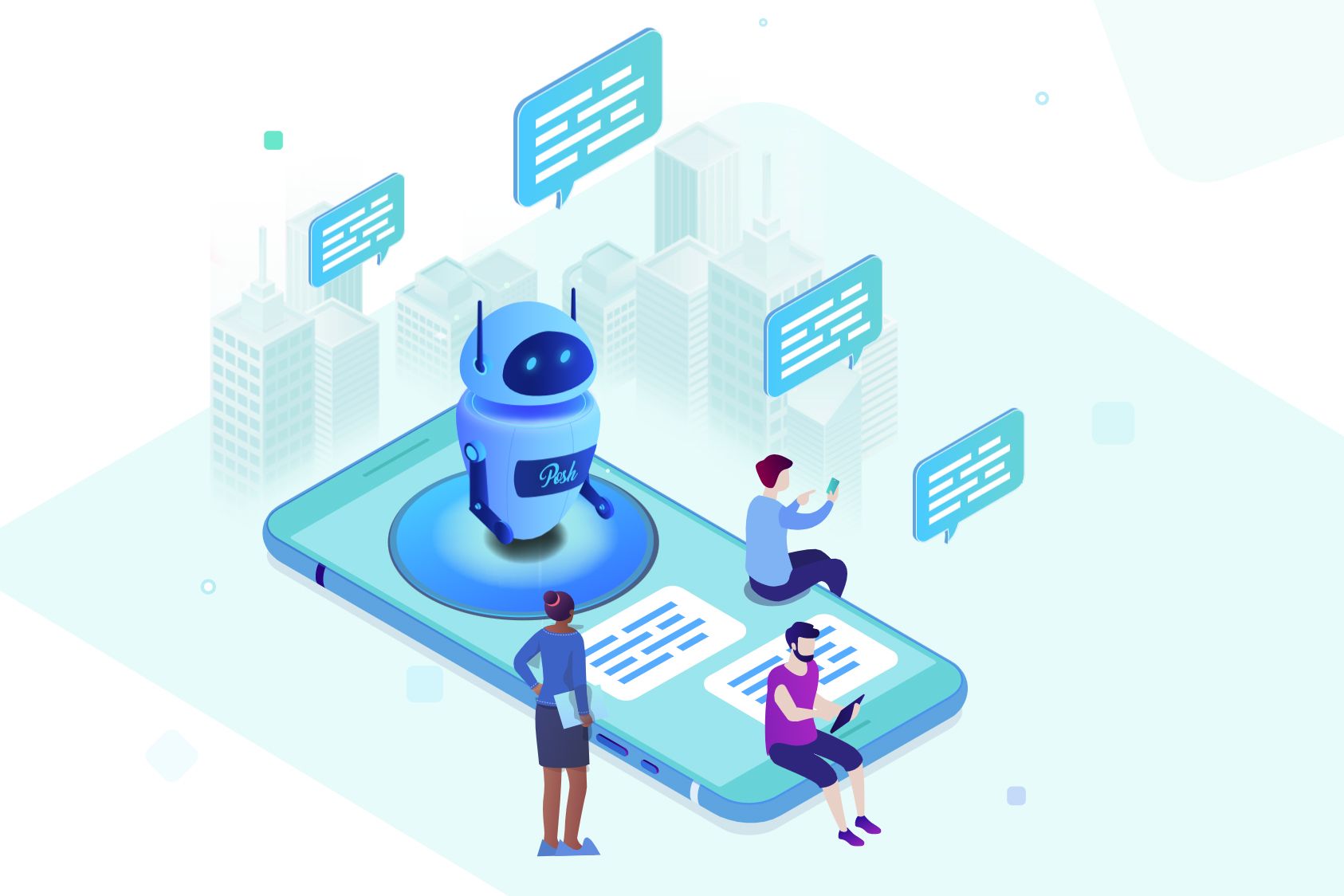
Implementing Chatbots in Your Marketing Strategy
Now that we’ve explored the myriad benefits of chatbots in marketing, it’s time to roll up our sleeves and delve into the practical aspects of implementation. This chapter will guide you through the steps of integrating chatbots into your marketing strategy effectively.
Setting Objectives
Before you embark on your chatbot journey, it’s crucial to define clear objectives. What do you want your chatbot to achieve? What problems do you intend to solve? Identifying specific goals will shape the development and deployment of your chatbot.
- Defining Your Chatbot’s Purpose: Start by defining the primary purpose of your chatbot. Is it meant for customer support, lead generation, or sales assistance? Each objective will require a tailored approach and set of functionalities.
- Identifying Target Audience Needs: Understanding your target audience’s needs is paramount. Conduct market research and gather insights into customer pain points and preferences. Your chatbot should address these needs effectively.
- Aligning Chatbot Goals with Marketing Objectives: Your chatbot’s objectives should align seamlessly with your broader marketing goals. Whether it’s increasing website conversions, improving customer satisfaction, or streamlining processes, make sure your chatbot contributes to your marketing strategy’s success.
Choosing the Right Platform
Selecting the right platform for your chatbot is a critical decision that impacts functionality, scalability, and user experience. Several options are available, each with its advantages and limitations.
- DIY Chatbot Platforms: DIY (Do It Yourself) chatbot platforms offer pre-built templates and user-friendly interfaces for creating chatbots without extensive coding knowledge. These platforms are great for smaller businesses or those with limited resources.
- Custom Development vs. Off-the-Shelf Solutions: Custom chatbot development provides maximum flexibility and customization. If you have specific requirements or a unique user experience in mind, a custom-built chatbot may be the way to go. Off-the-shelf solutions, on the other hand, offer quick deployment but may have limitations in terms of customization.
- Scalability and Flexibility Considerations: Consider your business’s scalability needs. Will your chatbot need to handle a growing user base and increasing volumes of interactions? Ensure that the platform you choose can accommodate your future growth.
Designing Conversational Experiences
The user experience is at the heart of successful chatbots. Designing engaging and natural conversations is essential for building rapport with users and achieving your chatbot’s objectives.
- Crafting Engaging Dialogues: Chatbot conversations should feel human-like and engaging. Avoid overly robotic or monotonous interactions. Use language that resonates with your brand’s tone and style.
- Humanizing Your Chatbot’s Personality: Giving your chatbot a personality can enhance the user experience. Whether it’s a friendly and helpful tone or a more formal approach, defining your chatbot’s personality traits can make interactions more relatable.
- Handling Complex Customer Queries: While chatbots excel in handling routine inquiries, they should also be equipped to handle more complex questions. Implement fallback mechanisms that gracefully transition users to human agents when necessary.
Integration with Existing Tools
To maximize the value of your chatbot, seamless integration with existing tools and systems is essential. This ensures a cohesive customer experience and efficient data management.
- CRM and Chatbot Synergy: Integrating your chatbot with Customer Relationship Management (CRM) systems allows for a unified view of customer interactions. This integration ensures that user data is collected, stored, and utilized effectively across your organization.
- Seamless Data Sharing: Chatbots should seamlessly share data with other software applications your business relies on. Whether it’s connecting with your e-commerce platform, email marketing software, or analytics tools, data sharing enhances efficiency.
- Ensuring a Cohesive Customer Experience: Customers should experience a consistent journey across all touchpoints, whether they interact with your website, social media, or chatbot. Integration ensures that user data is shared, and interactions are synchronized.
With your chatbot objectives, platform, conversational design, and integration strategy in place, you’re well on your way to creating a powerful marketing tool. In the next chapter, we’ll address the challenges that come with implementing chatbots and provide practical solutions to overcome them.
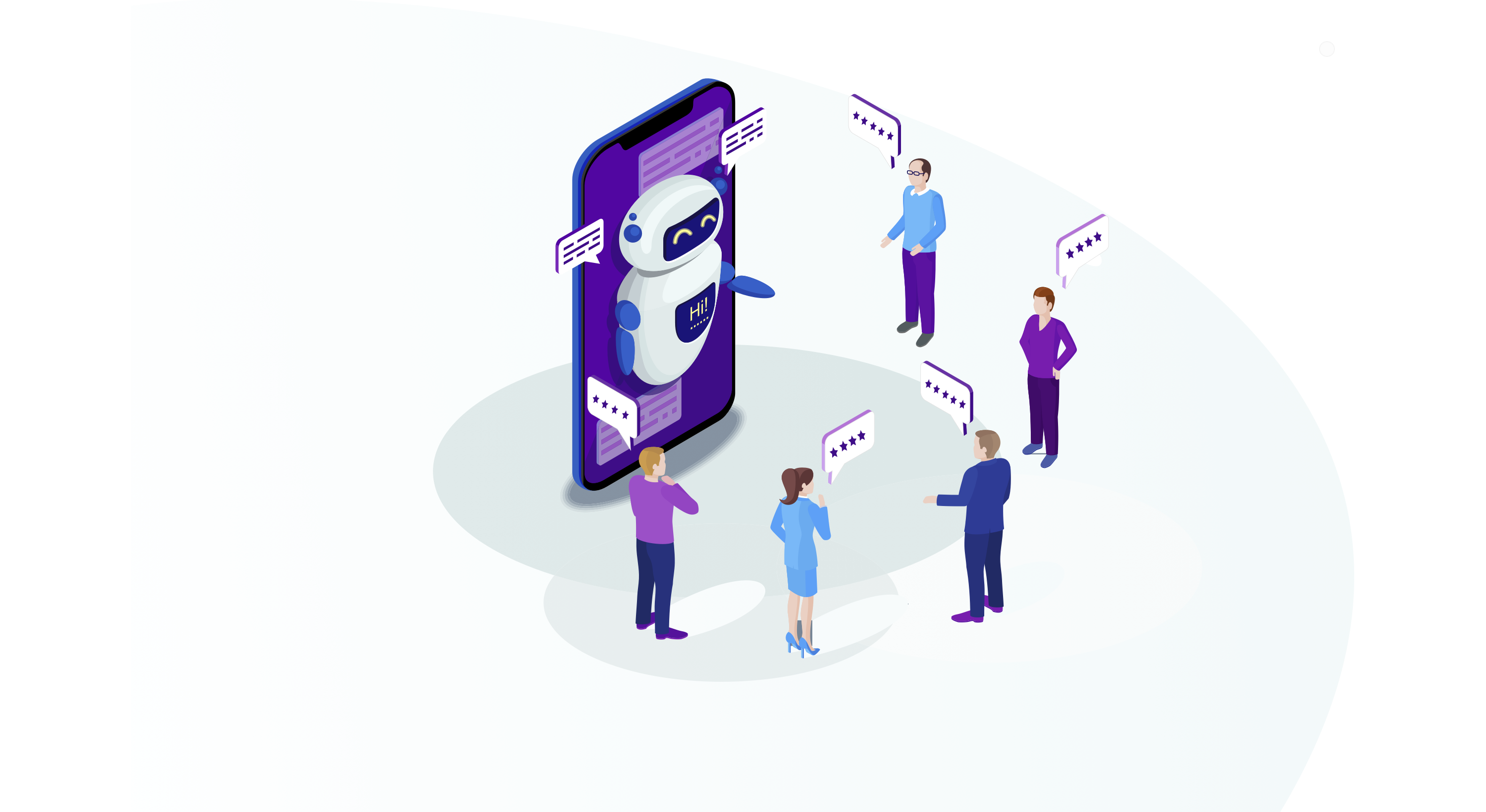
Challenges and Solutions
While chatbots offer significant advantages, they are not without their challenges. In this chapter, we’ll explore common hurdles businesses face when implementing chatbots and provide solutions to address them effectively.
Managing Customer Expectations
Managing customer expectations is crucial to ensuring a positive chatbot experience. When users interact with a chatbot, they should have a clear understanding of its capabilities and limitations.
- Setting Realistic Chatbot Capabilities: Be transparent about what your chatbot can and cannot do. Avoid overpromising its capabilities. If your chatbot specializes in customer support, clearly communicate that it may not provide in-depth technical assistance.
- Handling Moments of Frustration: Users may become frustrated if a chatbot cannot resolve their issue. Implement mechanisms to detect user frustration and gracefully transition them to human agents when needed. A well-designed handover process can turn a potentially negative experience into a positive one.
- Escalating to Human Agents Effectively: Define criteria for when a chatbot should escalate a conversation to a human agent. For instance, if a user expresses frustration or asks for human assistance, the chatbot should seamlessly transfer the conversation to a live agent who can provide personalized support.
Data Privacy and Security
Data privacy is a growing concern among users. Ensuring that your chatbot handles sensitive information securely is paramount.
- GDPR and Chatbots: If you operate in regions subject to data protection regulations like the General Data Protection Regulation (GDPR), ensure that your chatbot complies with these laws. Clearly communicate how user data is collected, used, and stored, and obtain necessary consent.
- Protecting Sensitive Customer Information: Implement robust security measures to protect sensitive customer information. Encrypt data transmission, use secure servers, and regularly audit your chatbot’s security to identify and address vulnerabilities.
- Building Trust Through Transparency: Transparency is key to building trust with users. Provide a privacy policy that explains your data handling practices. Inform users about the purposes of data collection and assure them that their information is handled with care.
AI Bias and Fairness
AI bias can lead to discriminatory outcomes in chatbot interactions. It’s crucial to identify and mitigate bias to ensure fair and equitable user experiences.
- Identifying and Addressing Bias: Regularly audit your chatbot’s responses for bias. Use diverse training data to reduce biases in language and responses. Implement bias detection algorithms to identify and correct biased behavior.
- Ethical Considerations in AI Marketing: Ethical considerations go beyond bias detection. It’s essential to think about the broader ethical implications of chatbot usage, such as respecting user privacy, avoiding deceptive practices, and promoting inclusivity.
- Promoting Diversity in AI Development: Diverse teams contribute to more inclusive AI solutions. Encourage diversity in your chatbot development team to bring a variety of perspectives and experiences to the table. This can help identify and address potential biases more effectively.
Keeping Up with Technology
The field of AI is constantly evolving, and keeping your chatbot up to date with the latest advancements is a challenge.
- Rapid Advancements in AI: Stay informed about the latest advancements in AI and chatbot technology. Regularly update your chatbot’s algorithms and models to ensure it remains competitive and capable of delivering cutting-edge user experiences.
- Future-Proofing Your Chatbot: Anticipate future technological changes and trends in customer behavior. Design your chatbot with flexibility in mind, allowing for easy updates and adaptations as needed.
- Continuous Learning and Improvement: Embrace a culture of continuous learning and improvement. Gather user feedback, analyze performance metrics, and iterate on your chatbot’s design and capabilities to meet evolving user needs.
In the next chapter, we’ll explore how to measure the success of your chatbot implementation, including key performance indicators (KPIs), A/B testing, feedback loops, and real-world case studies of successful chatbot deployments.
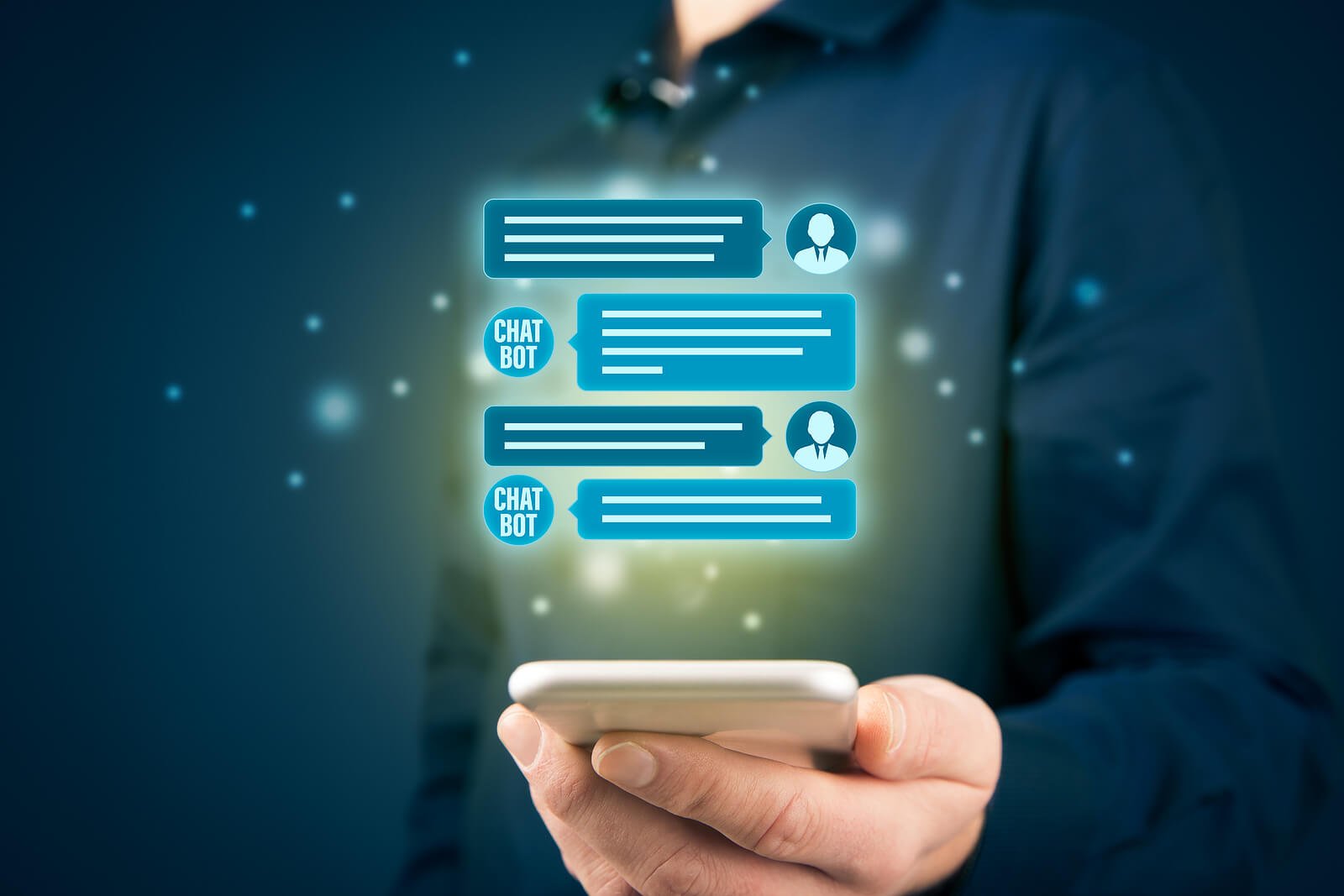
Measuring Success
Measuring the success of your chatbot is essential to understand its impact on your marketing strategy and customer engagement. In this chapter, we’ll delve into the metrics and methods for evaluating chatbot performance.
Key Performance Indicators (KPIs)
Key performance indicators (KPIs) are metrics that help you gauge the effectiveness of your chatbot. Here are some essential KPIs to consider:
Metrics for Evaluating Chatbot Performance
-
Response Time: How quickly does the chatbot provide a response to user queries?
-
User Engagement: Measure the number of interactions and conversations initiated by users.
-
Conversion Rate: Track the percentage of users who complete desired actions, such as making a purchase or signing up for a newsletter, after interacting with the chatbot.
-
Customer Satisfaction: Collect user feedback and ratings to assess how satisfied users are with the chatbot’s assistance.
-
Fallout Rate: Analyze the rate at which users abandon chatbot interactions without resolution.
-
Cost Savings: Calculate the cost savings achieved by automating tasks that were previously handled by human agents.
- Tracking Customer Satisfaction: Customer satisfaction is a critical KPI for chatbots. Gather user feedback through post-interaction surveys or direct queries within the chatbot interface. Use this feedback to identify areas for improvement and enhance the user experience.
- Benchmarking Against Industry Standards: Compare your chatbot’s performance metrics to industry benchmarks. This can help you understand how your chatbot stacks up against competitors and identify areas where you may need to improve.
A/B Testing
A/B testing involves comparing two versions of your chatbot to determine which one performs better. It’s a valuable technique for optimizing chatbot interactions and improving user engagement.
- Optimizing Chatbot Interactions: Experiment with different dialogue variations to identify which messages and approaches resonate best with users. Test factors like language tone, response length, and call-to-action prompts.
- Experimenting with Dialogue Variations: A/B testing allows you to refine your chatbot’s dialogue continuously. For example, you can test whether a more casual or formal tone leads to better user engagement.
- Iterative Improvements for Better Engagement: A/B testing is an iterative process. Use the insights gained from tests to make continuous improvements to your chatbot’s dialogue and responses.
Feedback Loops
Feedback loops are mechanisms for gathering and incorporating user feedback into chatbot improvements. Establishing effective feedback loops is crucial for long-term success.
- Gathering User Feedback: Encourage users to provide feedback after interacting with your chatbot. Implement surveys, ratings, or open-ended questions to collect insights into user preferences and pain points.
- Incorporating Customer Suggestions: Act on user feedback to make meaningful improvements. If users consistently express a need for specific features or improvements, prioritize these enhancements in your chatbot’s development roadmap.
- Iterative Chatbot Enhancements: Use user feedback to drive iterative enhancements to your chatbot. Regularly release updates that address user concerns and align with their preferences.
Case Studies in Success
To illustrate the impact of chatbots on marketing strategies, let’s explore real-world case studies of successful chatbot implementations across different industries.
Industry-Specific Success Stories
-
E-commerce: A leading online retailer implemented a chatbot that provided personalized product recommendations based on user browsing history. This led to a 20% increase in sales and a 15% boost in average order value.
-
Hospitality: A hotel chain introduced a chatbot for booking inquiries and concierge services. This chatbot reduced response times, resulting in a 30% improvement in customer satisfaction scores.
-
Finance: A financial institution deployed a chatbot for account inquiries and transaction history. The chatbot reduced operational costs by 25% and improved query resolution times by 40%.
Measuring ROI and Customer Impact
The success stories above demonstrate the tangible benefits of chatbots. To measure the ROI of your chatbot, calculate the cost savings, increased sales, and improved customer satisfaction resulting from its implementation.
Lessons Learned from Top Brands
Top brands that have successfully integrated chatbots into their marketing strategies often share common lessons. These include the importance of aligning chatbot objectives with broader marketing goals, continually iterating based on user feedback, and staying abreast of technological advancements.
With a thorough understanding of how to measure chatbot success, you can ensure that your implementation delivers on its promises and contributes positively to your marketing strategy.
Conclusion
In conclusion, chatbots have ushered in a new era of customer engagement in AI marketing. They offer personalization at scale, 24/7 availability, cost efficiency, and valuable data-driven insights. By setting clear objectives, choosing the right platform, designing engaging conversational experiences, and integrating chatbots effectively, businesses can harness the full potential of this transformative technology.
However, challenges such as managing customer expectations, ensuring data privacy and security, addressing AI bias, and keeping up with technology must be navigated. By implementing solutions and best practices, these challenges can be turned into opportunities for growth.
Measuring the success of chatbots through KPIs, A/B testing, feedback loops, and real-world case studies is essential for optimizing their performance and demonstrating their value. As chatbots continue to evolve, businesses that embrace them will stay ahead of the competition and provide exceptional customer experiences.
Embrace the chatbot revolution, and you’ll find that they are not just tools but invaluable partners in your marketing journey. The future of AI marketing is here, and it’s powered by chatbots.


